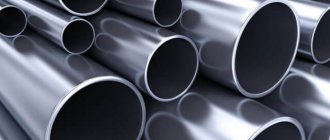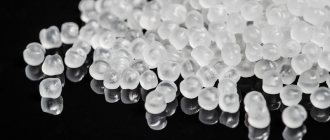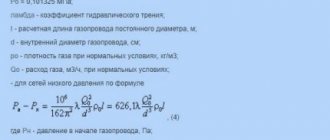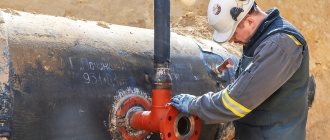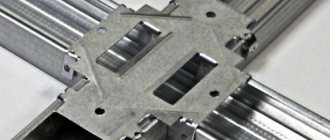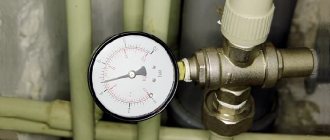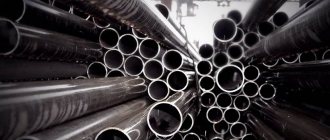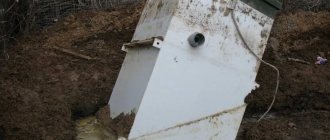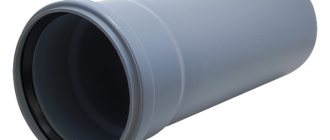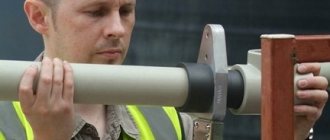HPS (high pressure hose) is a dense and fairly flexible pipeline. It is commonly used to transport oily liquids under high pressure. The hose consists of two (sometimes more) rubber hoses, which are placed one inside the other. The hose is reinforced with metal braid. The hose is capable of withstanding temperatures ranging from -40 to 100 degrees. There are a number of companies producing high-pressure hoses that are capable of working in extreme conditions from -50 to 155 degrees. The radius is measured from the inside of the hose. It is very important that the flattening does not exceed 10% of the outer diameter. The strength of the hose must withstand 500 atmospheres or 50 MPa.
RVDs are actively used in the vast majority of industrial enterprises. Many production mechanisms operate with hydraulic systems, which is where the use of internal pressure hoses is necessary. Where simple hoses are unable to withstand high pressure, RVD comes to the rescue. Before we look at how repairs and crimping of high-pressure hoses are done, as well as the production of high-pressure hoses. A little theory. There are two types of hose reinforcement:
- Braided
- Winding
The braided design is practically the most popular and in demand on the hose market. The more braid a hose is reinforced with, the more pressure it can withstand.
Repair and testing of high pressure hoses
In this article we will again mention our good friends from the C-Agroservice company. Among other things, the company produces, repairs and crimps high-pressure hoses. In addition, they are leaders in the market for services for working with hose hoses, thanks to their high-tech equipment for pressing and repairing hose hoses.
Typically, a “bare” billet is supplied to production. To be completely ready for use, it is necessary to prepare fittings and couplings. The coupling is put on the hose, then the fitting is inserted into the end of the hose. The coupling is pulled to the fitting and the RVD presser tightly compresses the coupling with the hose, fixing the fitting as firmly as possible. The dense metal tip ensures maximum tightness and strength of the entire hose. Tips for both high-pressure hoses and any other hardware can be purchased from the link. Everything will be delivered to you exactly on time, which means you don’t have to worry about time. The company takes care of its customers. A huge selection of fittings for any high pressure hose and more. The RVD hoses themselves can be ordered using the link.
On what equipment does crimping take place?
The C-Agroservice company uses a high pressure hose crimping machine, machine model YL-32.
Their machine is designed for the production and crimping of hoses for washing equipment, as well as crimping industrial, thermoplastic pipes and high-pressure hoses.
The model is designed to speed up and simplify the repair and crimping of high-pressure hoses.
Where is RVD used?
The use of special-purpose hoses is reflected in the product names. Its default characteristics fully meet the operating conditions and do not require additional comments. The scope of application of general purpose hoses covers more areas. The main ones are:
The applicability of high pressure hoses also depends on the properties of the materials from which they are made. For example, regular and oil-resistant rubber can be used in the production of hoses. To work outdoors, you need products that are resistant to weather influences, especially ultraviolet radiation and temperature changes.
Application of RVD
RVD hoses have found their application in almost every area of production activity. High pressure hoses are used:
- Road construction equipment. Cranes, bulldozers, motor graders.
- Drilling rigs and equipment
- Forestry installations and equipment
- Agricultural machinery. Combines, tractors, trailers
- Railway transport
- Manufacturing plants
- Motor transport
Russian and foreign RMA
The difference between foreign hoses and Russian ones is the difference in the nominal diameter designations due to the size designations in inches on foreign hoses. Thus, there are inconsistencies in sizes; it is necessary to take these points into account when selecting, purchasing, or replacing hoses.
size table
| Type | Size | Inner diameter, mm | Outer diameter, mm | Working pressure, atm | Burst pressure, atm | Weight l.m. kg | Minimum bending radius, mm | |
| Hydraulic hoses with one metal braid | ||||||||
| 1SN | 6 | 1/4″ | 6,2 | 13,4 | 225 | 900 | 0,25 | 100 |
| 8 | 5/16″ | 7,7 | 15,0 | 215 | 850 | 0,31 | 115 | |
| 10 | 3/8″ | 9,3 | 17,0 | 180 | 720 | 0,36 | 130 | |
| 12 | 1/2″ | 12,3 | 20,6 | 160 | 640 | 0,45 | 180 | |
| 16 | 5/8″ | 15,5 | 23,7 | 130 | 520 | 0,52 | 200 | |
| 20 | 3/4″ | 18,6 | 27,7 | 105 | 420 | 0,65 | 240 | |
| 25 | 1″ | 25,0 | 35,6 | 88 | 350 | 0,91 | 300 | |
| 32 | 1-1/4″ | 31,4 | 40,5 | 63 | 250 | 1,30 | 420 | |
| 38 | 1-1/2″ | 37,7 | 50,6 | 50 | 200 | 1,70 | 500 | |
| 51 | 2″ | 50,4 | 64,0 | 40 | 160 | 2,00 | 630 | |
| Hydraulic hoses with double metal braid | ||||||||
| 2SN | 6 | 1/4″ | 6,2 | 15,0 | 400 | 1600 | 0,36 | 100 |
| 8 | 5/16″ | 7,7 | 16,6 | 350 | 1400 | 0,45 | 115 | |
| 10 | 3/8″ | 9,3 | 19,0 | 330 | 1320 | 0,54 | 130 | |
| 12 | 1/2″ | 12,3 | 22,2 | 280 | 1100 | 0,68 | 180 | |
| 16 | 5/8″ | 15,5 | 25,4 | 250 | 1000 | 0,80 | 200 | |
| 20 | 3/4″ | 18,6 | 29,3 | 215 | 850 | 0,94 | 240 | |
| 25 | 1″ | 25,0 | 38,1 | 165 | 650 | 1,35 | 300 | |
| 32 | 1-1/4″ | 31,4 | 48,3 | 125 | 500 | 2,15 | 420 | |
| 38 | 1-1/2″ | 37,7 | 54,6 | 90 | 360 | 2,65 | 500 | |
| 51 | 2″ | 50,4 | 63,5 | 80 | 320 | 3,42 | 630 | |
| Hydraulic hoses with quadruple metal winding | ||||||||
| 4SP | 10 | 3/8″ | 9,3 | 21,2 | 445 | 1780 | 0,75 | 180 |
| 12 | 1/2″ | 12,3 | 24,6 | 415 | 1660 | 0,89 | 230 | |
| 16 | 5/8″ | 15,5 | 28,2 | 350 | 1400 | 1,10 | 250 | |
| 20 | 3/4″ | 18,6 | 32,0 | 350 | 1480 | 1,50 | 300 | |
| 25 | 1″ | 25,0 | 39,0 | 280 | 1120 | 2,00 | 340 | |
| 32 | 1-1/4″ | 31,4 | 51,0 | 210 | 840 | 3,00 | 460 | |
| 38 | 1-1/2″ | 37,7 | 57,0 | 185 | 740 | 3,40 | 560 | |
| 51 | 2″ | 50,4 | 71,0 | 165 | 660 | 4,35 | 660 | |
| 4SH | 12 | 1/2″ | 12,3 | 24,6 | 600 | 2400 | 0,90 | 180 |
| 16 | 5/8″ | 15,5 | 28,3 | 550 | 2200 | 1,15 | 225 | |
| 20 | 3/4″ | 18,6 | 32,2 | 420 | 1680 | 1,70 | 280 | |
| 25 | 1″ | 25,0 | 39,7 | 380 | 1520 | 2,50 | 340 | |
| 32 | 1-1/4″ | 31,4 | 47,1 | 325 | 1300 | 3,00 | 460 | |
| 38 | 1-1/2″ | 37,7 | 55,1 | 290 | 1160 | 3,60 | 560 | |
| 51 | 2″ | 50,4 | 69 | 250 | 1000 | 5,00 | 700 | |
Repair the high pressure hose, buy an analogue high pressure hose.
A leak or rupture of a sleeve is a truly unpleasant thing, and sometimes literally tragic. The profitable operation of the machines, and often the safety of people, directly depends on the quality of the hoses used on your equipment. That is why it is important to find the right supplier (and not a reseller) of high-quality and inexpensive hoses. We are happy to help you - in our warehouse we always have a large stock of high pressure hoses for various purposes from leading European manufacturers - a guarantee of quality and durability.
Enterprises producing high-pressure hoses
The process of producing high-quality hose hoses (without fittings) is quite complex. There are few main manufacturing companies:
- Diesse (Italy),
- Manuli Rubber Industries, Parker Hannifin Corporation, Semperflex (Austria, Czech Republic),
- Rapisarda (Italy),
- Hydroscan (Sweden),
- Yokohama Rubber Co. (Japan),
- Parker Markwel Industries Pvt., Ltd (India),
- “Solikamsky (Kursk), “Svarog” (Novokuznetsk).
To produce high-pressure hoses, cutting machines are required (from portable to high-speed semi-automatic and automatic), crimping presses with sets of cams of all sizes, debarking machines, and test benches. The main manufacturers of this equipment:
- Finn-Power and D-Hydro Oy (Finland),
- Uniflex (Germany),
- O+P (Italy),
- Techmaflex (France),
- Verso (England).
For companies with a large fleet, it may be beneficial to organize hose repairs directly at the enterprise. According to experts, the costs are recouped in 6-12 months (with minimal repair of one hose per day). This will ensure reduction of downtime, quality control of repairs, and the possibility of additional profit through repair services.
How are RVDs designed?
The main design features of flexible pipelines from different manufacturers are similar. They consist of several layers:
- internal sealing rubber layer (made of rubber with a special composition, which ensures the tightness of the hose and is also resistant to aggressive environments and stretching);
- metal reinforcing layer (made of wire or synthetic threads of high strength; there may be several such intermediate layers if the hose is intended to be used in systems with very high pressure);
- outer protective rubber layer (protects from external damage, ensuring the strength and durability of the sleeve; the rubber for this layer is characterized by high wear resistance).
Metal fittings are installed at the ends of the hose, which allow it to be connected to different systems. The design features of hoses may vary depending on the purpose for which they are created. For example, the reinforcing layer can be made in the form of braiding or winding.
Types of high pressure hoses
Modern manufacturers produce all kinds of hoses, with different diameters, resistance to the working environment and temperature influences, the working pressure of which is directly related to their design. Today you can find high-pressure hoses on equipment:
- with one braid type 1SN, 1SC;
- with two braids type 2SN, 2SC;
- with three braids type 3SK;
- with four windings type 4SP, 4SH;
- with six windings type R13, R15;
- frost-resistant hoses 2SN, 2SC, 3SK, 4SH.
How to install the RVD correctly?
- The hose should not be stretched; ensure sufficient slack in the hose, as its length can change under the influence of impulses
- Use corner adapters and fittings to eliminate sharp bend angles
- Use corner adapters if the bend radius is less than the required minimum
- In connections that bend in two planes, secure the sleeve at the point where the bending plane changes
- Use spring protection to prevent sharp bending angles
- In moving joints, sleeves of sufficient length should be used to prevent bending and chafing.
- To avoid twisting and chafing, place the sleeve in the same plane as the movement of its connectors.
- Do not attach high and low pressure lines together
Causes of high pressure hose defects
Universal hoses wear out due to hypothermia and freezing when diesel excavators are stopped in winter. Cracks often form where hoses that transmit hydraulic fluid are bent.
When pumping thickened oil at a temperature of -49-52°C, swelling of the universal hoses occurs. This is a defect in which the sleeve must be changed.
What is the risk of failure?
Wear of the hose harms the unit it serves, or, more often, stops the entire machine. The first signs of deterioration must be quickly eliminated: otherwise the consequences can be dangerous for humans.
What is a high pressure hose?
The key property of RVD is flexibility. This is a flexible pipeline used to transport liquids (this can be water, oil, lubricant, glycol, emulsions) in order to transmit working force.
Not a single hydraulic system can exist without a hydraulic hose: somewhere it is necessary to connect two moving parts of the hydraulic system, somewhere for engineering reasons a flexible hose is better suited than a non-flexible pipeline - there are many options.
The appearance of the RVD is primitive; it is a hose equipped with connecting fittings. In reality, the RVD is a very complex structure. Two or more tubes are placed one inside the other. Each of the tubes has reinforcement (reinforcement) using textile and, more often, metal braids or windings. The number of reinforced pipelines nested inside each other can reach six: the more, the greater the pressure the hose is designed for.
Types of hoses
There are two main types: special and universal.
- Special ones are characterized by durability, reliability, resistance to thermal, climatic and mechanical influences.
- Universal are widely applicable, as they are suitable for any hydraulic mechanisms. They have domestic and international quality certificates and can transport liquids and gases with temperatures from -50 to +100 °C.
Technical characteristics of flexible pipelines
High pressure hoses have several parameters that determine their category. The main ones include:
- operating pressure;
- bend radius;
- operating temperatures.
All categories of braided and coiled hoses have their own maximum operating pressure. They are prescribed in European standards and Russian GOSTs, in accordance with which products must be manufactured.
The temperature at which RVDs can be used is determined by international standards in the range from -40°C to +100°C. Many brands produce hoses for extreme conditions; they can be used at -55, -50°C.
The bend radius is important for ease of handling the product. The smaller it is, the more functional the pipeline will be, and the more mechanisms can be equipped with it. Requirements for bend radius are also determined by standards and GOSTs and depend on product categories.
